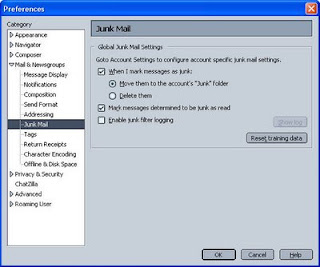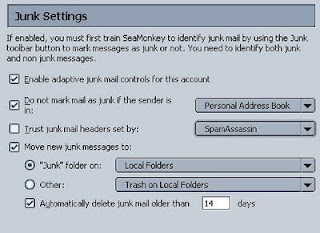As a manager in my present and past companies, I had interviewed with numerous candidates for my department's job openings. And when I changed job in the past, I was also being interviewed by others. I have to agree that all interviewers are very concern about the integrity of the candidates.
Most job candidates would have encountered some or all of the following 4 scenarios. Did you react ethically and up to the interviewers' expectation? Perhaps you could learn something from the advices of the job hunter, and act smartly during your future interview sessions when similar scenarios occur again.
Scenario #1:
You had an interview arranged by a Recruitment Consultant. On the day of interview, you were not feeling well. What do you do?
(a) Call the employer to explain the situation and request the interview to be arranged on another day
(b) Did not show up for interview
(c) Send an email to the Recruitment Consultant to cancel the appointment
Allyhunt's advice: Keeping posted is important as this is somehow lost in today’s culture. So, (a) is the answer. In situation such as this, an email is not sufficient. The Consultant may not check the email at all. Even an SMS falls short. It is only courteous to make the call personally. And don’t get your boyfriend and girlfriend to call on your behalf too unless you are too sick to even get yourself a drink.
My comment: I had encountered candidates of (a), (b) and (c), and sad to say that majority of them fall under (b) or (c). As of myself, if I can't make it, I'll call the Recruitment Consultant asking for a rearrangement. I didn't call the employer directly because I believe I need to keep the Recruitment Consultant well informed about any changes to the scheduled interview, and I trust the Recruitment Consultant can make a wise arrangement for me.
Scenario #2:You attended two interviews with A and B companies and both companies have expressed interest in hiring you. Company A came back to you first and offered you the job and you accepted Company A’s offer. Before you sign the contract, Company B makes you an offer, with a RM200 more in salary. What do you do?
(a) Don’t sign the contract and accept Company B’s offer.
(b) Call Company A and tell them you are no longer interested. Reason given was another company has offered you a RM200 more in salary.
(c) Reject Company B offer and tell them that you had already accepted another offer.
Allyhunt's advice: The answer is (c).
KEEP YOUR WORD! To accept a position and then renege on it for a better offer is poor form. Believe me, it’s a small world and you would not want to be labeled as a candidate that can be bought over with money easily later in your career. What do you do in such situation? Best advice: accept offers only after careful consideration. Think critically rather than grabbing the first offer out of fear or desperation. It is unethical to continue to interview after accepting an offer and/or to renege on an accepted position. Company B will respect you for that. Who knows? The same company may have a senior position in the future and you may be applying for the job then. You probably stand a better chance for the ethics you hold firmly at the beginning of your career.
My comment: Yes, I did encountered last minute rejection from candidates who had accepted an offer, or worse still a no show-up when he/she suppose to commence to work. And frankly speaking, I did blacklisted those candidates with the HR, and for those no show-up candidates, I did file an official complaint and request for explanation from the head hunter (if the recruitment was done with this channel) or blacklist the candidate in the job searching website (if the recruitment was done with this channel, and the website has such function to blacklist candidates with poor ethics). As of myself, I did experience such moment, and I rejected Company B which offered RM1200 more than Company A. I also rejected interview invitation from Shell IT International (which was a good place where many IT personnels are eager to work with) because they called me a few days right after I joined Company A, which had been more than a month after I sent them my application. I'm still unsure if that was the best decision to stay put with Company A, but anyhow, I was promoted to managerial position later while I was serving Company A, which end up to be not too bad.
Scenario #3:You have been short listed for an interview at employer’s office after attended an on-campus interview. During the on-campus interview, you were very keen on the job and you managed to convince the employer accordingly. But now, the more you thought about the job, you find neither the organization nor position is for you. What shall you do?(a) Go for the interview anyway and pretend you are still interested.
(b) Ignore the interview completely as the employer would have also short listed other candidates.
(c) Tell the recruiter that you have changed your mind and do not wish to pursue this opportunity.
Allyhunt's advice: The answer is (c). At this stage of the process, it is not unethical for you to decline the offer to meet up at the office.
My comment: My own experience in the past, I did rejected a 2nd interview session with Intel, after I found out during 1st interview that the job position is a "Green Badge", which was employed under the job hunter company and outsourced to Intel, instead of being Intel's own employee, and I was not interested nor keen with such arrangement.
Scenario #4:During an interview, you are asked to give an example of a part-time job experience, but you never had that exact experience. What do you do?
(a) Make something up.
(b) Reinterpret the question to something you are more comfortable with and answer that question.
(c) Acknowledge that you have not had this experience, but offer the closest experience you have had.
The answer is (c). Telling your employers what you think they would like to hear or what you think will get you the job is not productive for you or the employer. If they discovered that you have been less than honest, you may be disqualified immediately.
My comment: Yes, honesty is very important. Only tell the fact to interviewer, don't make story. If you make the interviewer to have a wrong expectation on you, you will be having a very hard time if you happen to be employed, because the employer is expecting you to perform up to the standard and level as you have told them.
(Source of the above 4 scenarios and advisable answers are from Allyhunt, an executive sourcing company in Malaysia)























